Foods That Lower Blood Pressure
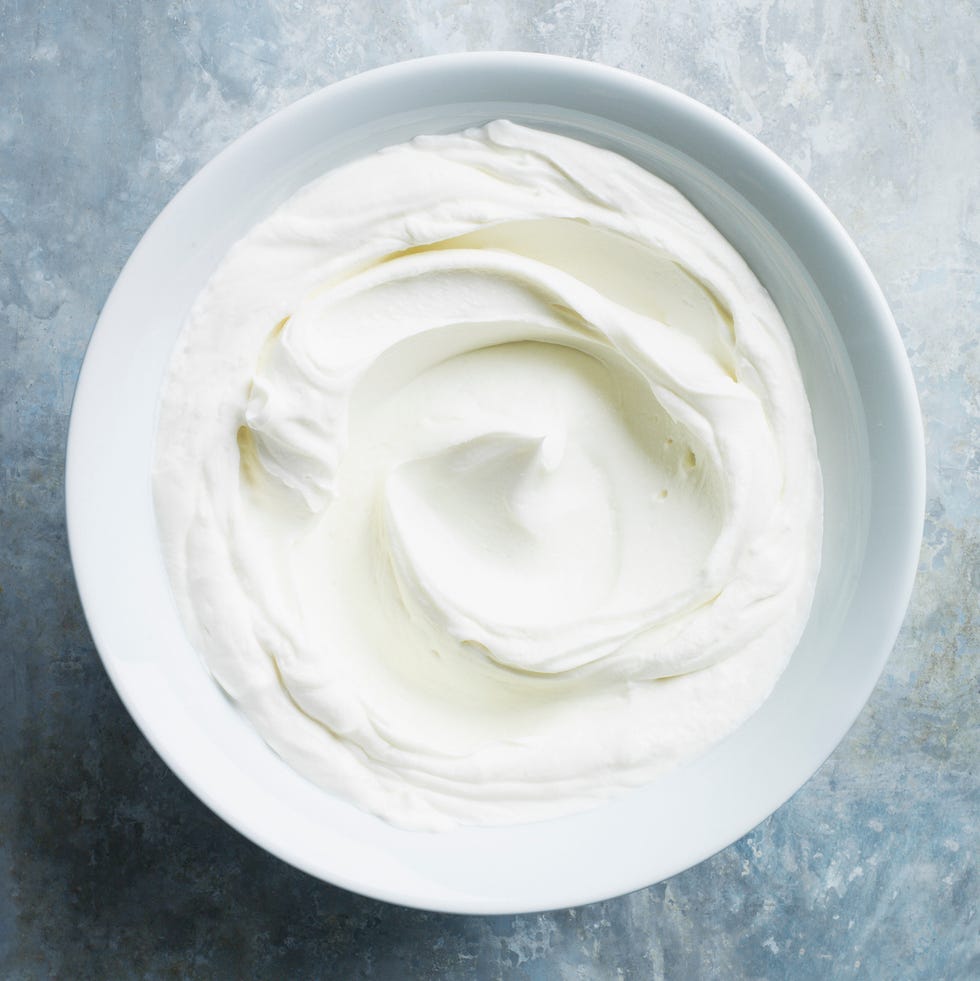
Low-fat or fat-free yogurt
Low-fat dairy products are a great source of calcium, which is one of the main compounds that help fight high blood pressure. Feller adds that potassium, protein, vitamins, and minerals from yogurt are great compliments to your diet as well. A 12-ounce serving of low-fat yogurt will give you about 30 percent of the recommended amount of calcium for the day.
Try it: For a burst of morning energy, mix a cup of low-fat Greek yogurt with granola, almond slivers, and berries for an extra heart-healthy boost. Stock up on these best yogurt brands and give it a try on this Tomato Toast with Mint Yogurt and Sumac Vinaigrette.
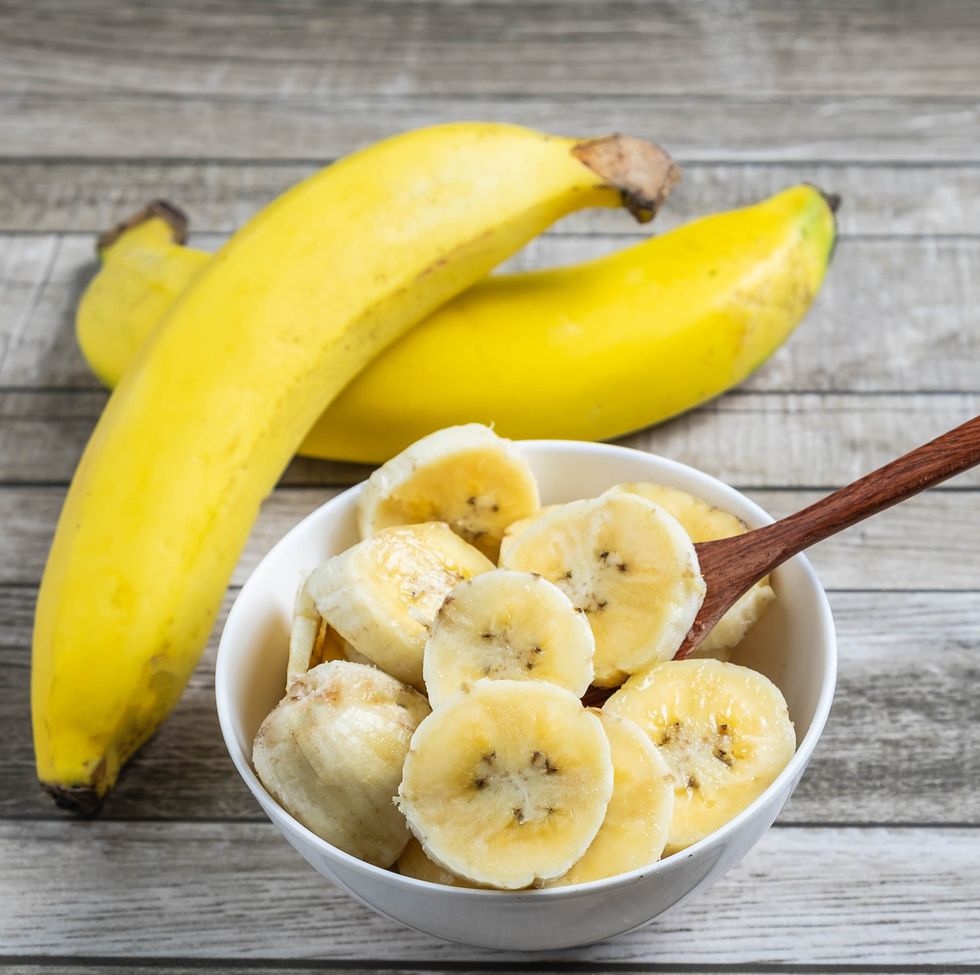
Bananas
Bananas are rich in potassium, with one average-sized banana packing about 420 milligrams. That's about nine percent of the recommended daily intake. Prest notes that potassium is great for blood pressure management and research has shown diets low in potassium are associated with higher blood pressure. Bananas are also rich in fiber and lend a natural sweetness to smoothies, baked goods, and frozen treats. Peel and freeze mushy bananas when they start to go bad.
Try it: Try them sliced with your breakfast, like these Peanut Butter-Banana Pancakes
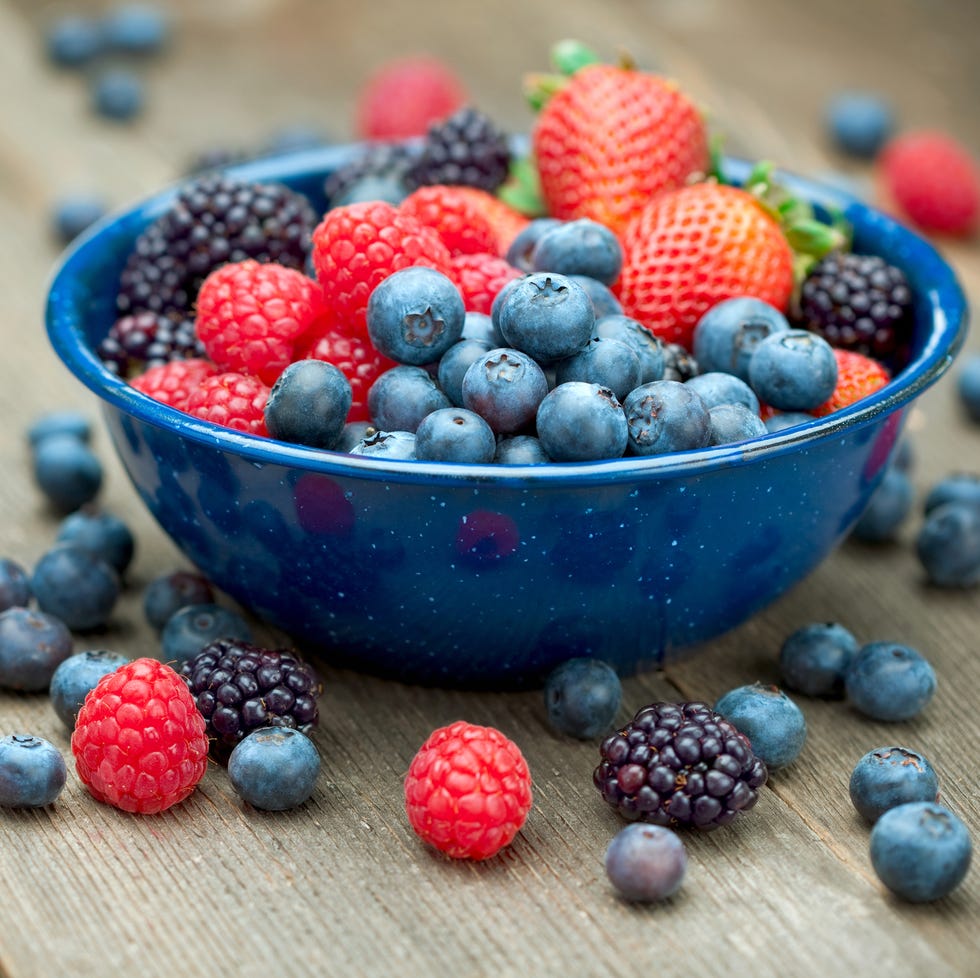
Berries
Berries, but specifically blueberries, are packed with nitric oxide, a gas that helps increase blood flow, thus lowering blood pressure. A March 2015 study by the Academy of Nutrition and Dietetics found that even less than an ounce of blueberries a day can help significantly lower blood pressure.
Try it: Add blueberries and other berries to your morning oatmeal and salads for lunch, or make them your dessert after dinner. Check out these creative and delicious ways to eat more berries for more inspiration, or five into this decadent Blueberry Smoothie Bowl.

Leafy greens
Leafy greens that include kale, spinach, collard greens, arugula, Swiss chard, beet greens, and romaine lettuce are excellent sources of potassium and magnesium. These work together to regulate blood pressure, Bland says. Think outside of the salad and glorify your greens in omelets, smoothies, and sandwiches.
Try it: If you want to sneak greens into a flavorful meal, try this Roasted Chicken and Potatoes With Kale.
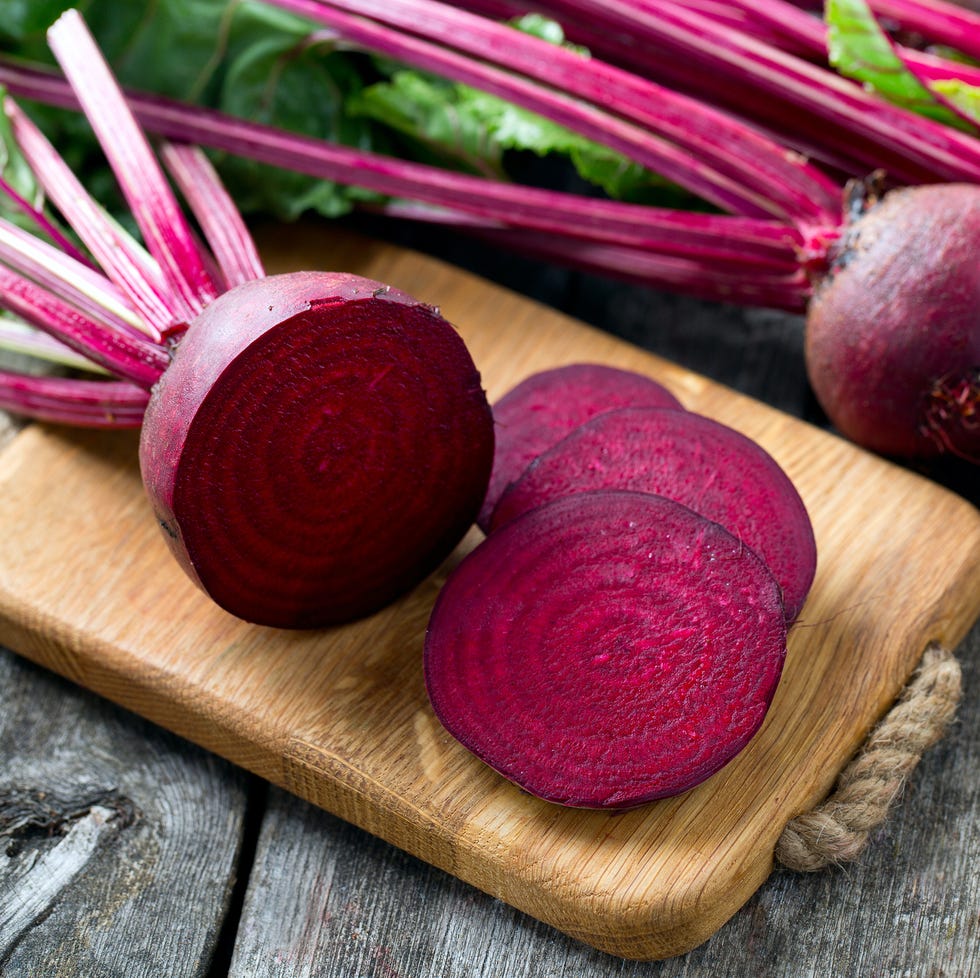
Beets
Similar to blueberries, beets are high in blood pressure-reducing nitric oxide. Research has shown that drinking beetroot juice can help lower your systolic blood pressure by four to five mmHg. Try adding beetroot juice to your diet, and if you buy store-bought juice, make sure there isn't added sugar.
Try it: Enjoy beets in a salad (like this Swiss Chard and Beets Salad), soup, or slaw
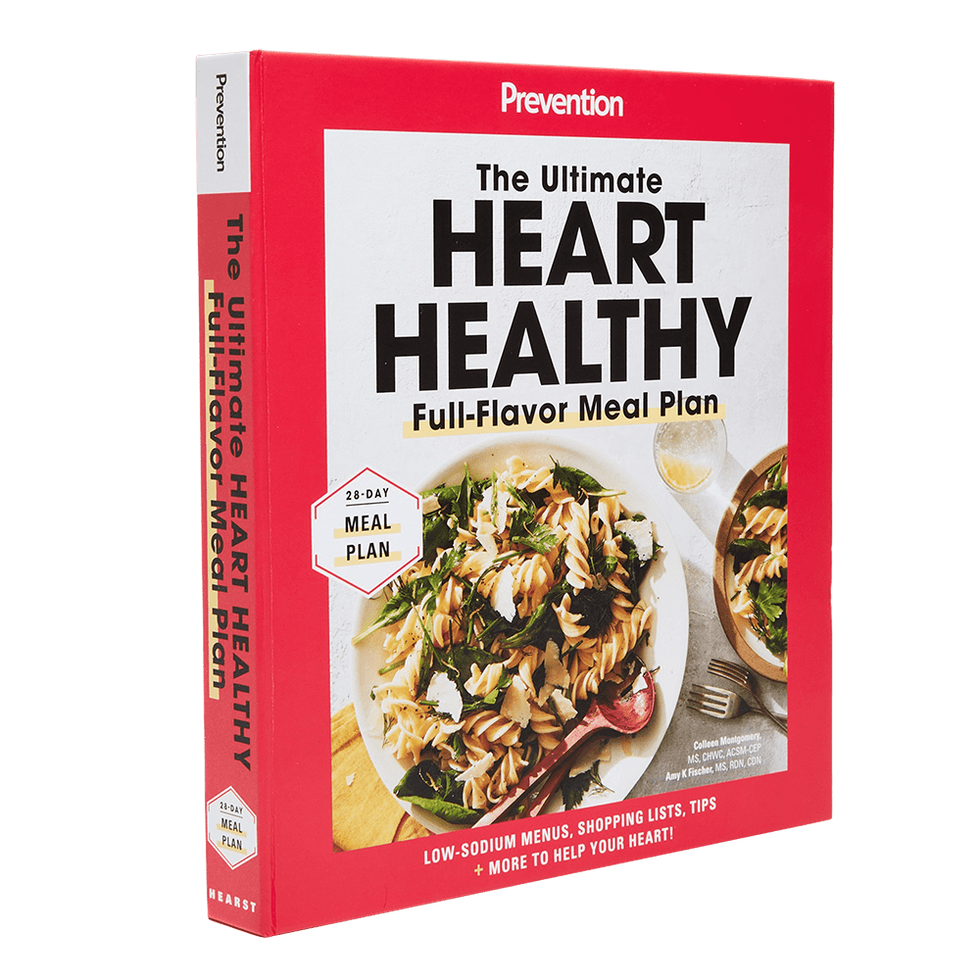
Eat Your Way to a Healthy Heart!
Discover how you can help lower cholesterol, improve blood pressure and boost your heart health with 28 days of delicious menus.
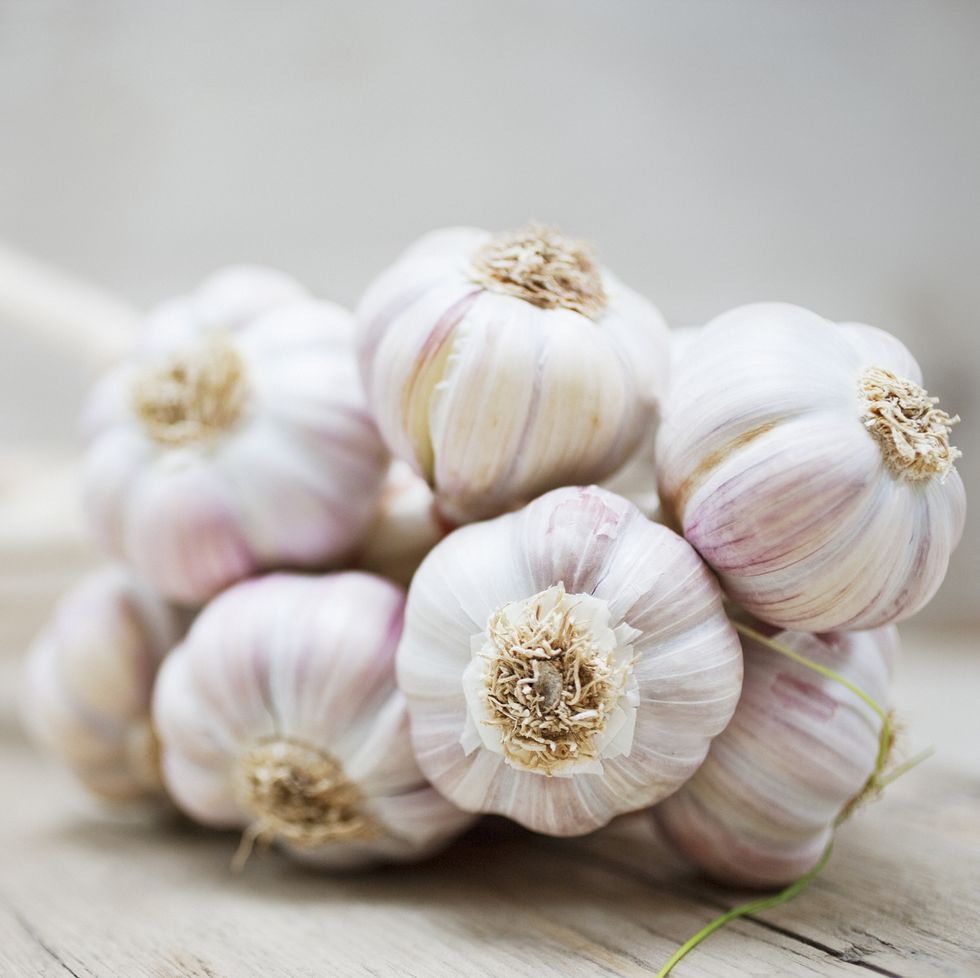
Garlic
According to the National Institute of Health (NIH), the compound allicin in garlic may be able to help reduce blood pressure. Allicin is released when garlic is crushed or chopped. However, doctors don't recommend using garlic supplements since there is limited research on their effectiveness for hypertension.
Try it: Make your own garlic spread by sprinkling olive oil on a full head of garlic, and then baking it in the oven until it’s brown and soft. Cut off the top layer of the garlic head and it yields a creamy and buttery texture.
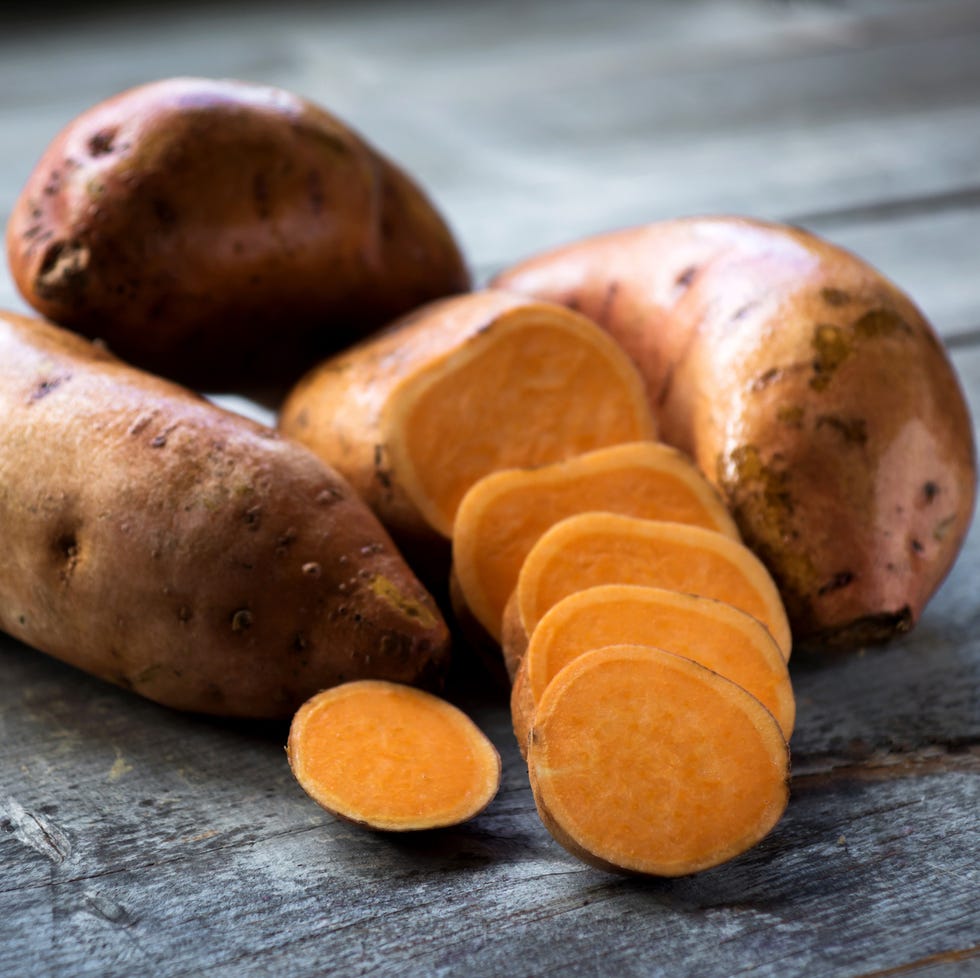
Sweet potatoes
Potassium- and magnesium-rich sweet potatoes are an essential part of following a blood pressure-reducing diet. Sweet potatoes are also high in fiber which is good for your heart, too.
Try it: Bake sweet potatoes in a sheet pan with your choice of lean protein for a quick and easy weeknight dinner. You can also make sweet potatoes the star with this Sweet Potato with Shredded Salad.
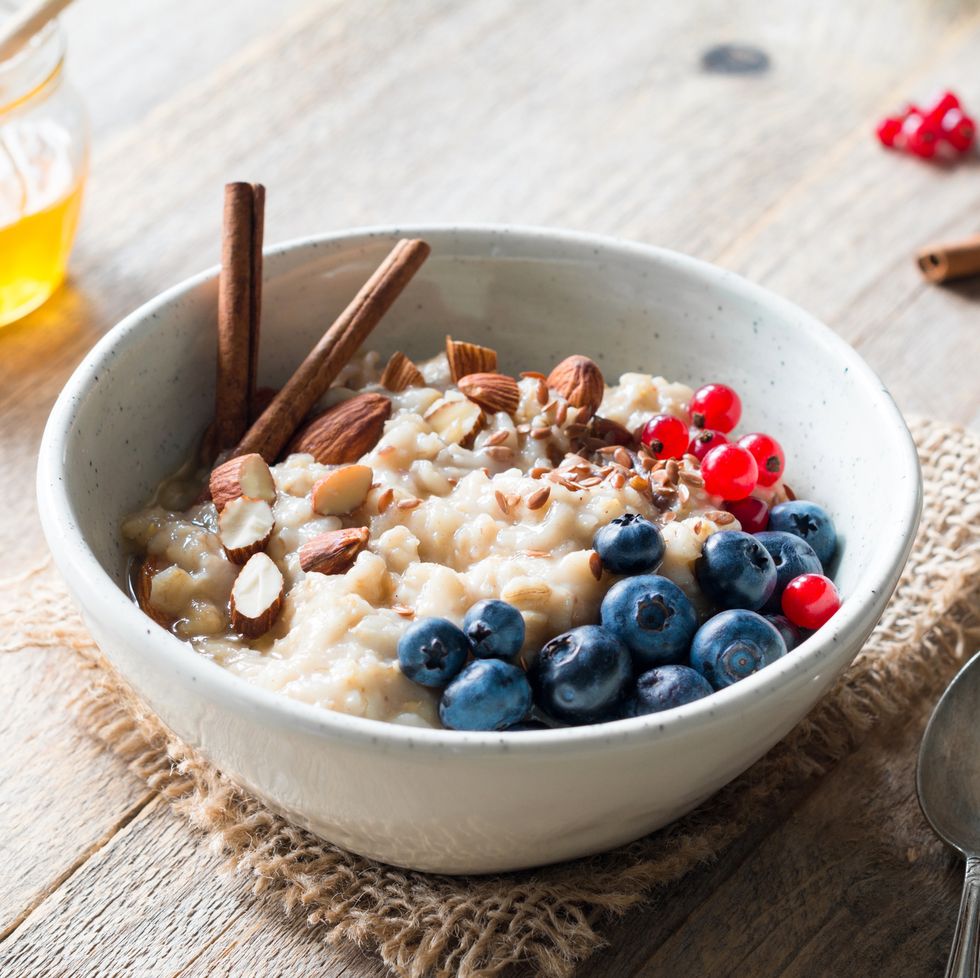
Oatmeal
High-fiber whole grains, especially oatmeal, have been linked to lowering the risk of cardiovascular disease , can help with weight loss, and may help to lower your cholesterol. Studies have shown that just three servings of whole grains a day can decrease your risk of heart disease by 15 percent. Oatmeal for breakfast is a great way to start your day with whole grains. Add whole-wheat bread at lunch and quinoa, barley, or brown rice at dinner
Try it: These overnight oats recipes will come in handy for super busy mornings.
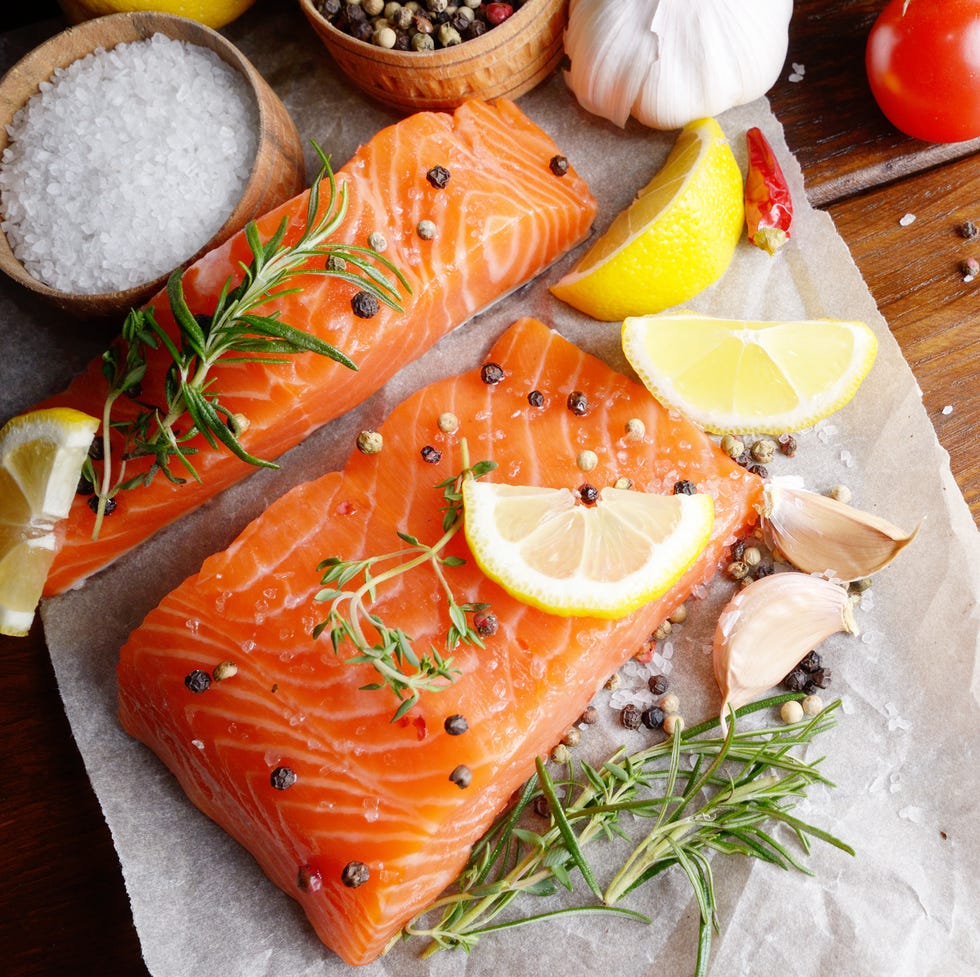
Salmon
Fatty fish like salmon and mackerel are high in omega-3 fatty acids, which reduce inflammation and can help lower blood pressure, says Bland. They are also a great source of vitamin D, which helps the body absorb calcium, protect against depression, and regulate blood pressure.
Try it: Cooking fatty fish is super easy. Simply season it with salt, pepper, and herbs, add a little olive oil, and pop it in the oven to broil. For a specific recipe, we love this honey-spiced salmon with quinoa or try one of our best salmon recipes.

Avocado
Creamy avocado is a great source of calcium, magnesium, and potassium. One avocado contains about 975 milligrams of potassium, which is about 25 percent of your daily intake.
Try it: Enjoy avocado toast in a salad like this Salmon Salad with Green Goddess Dressing, or mix it with tuna instead of mayo for a protein-rich sandwich and salad topper.
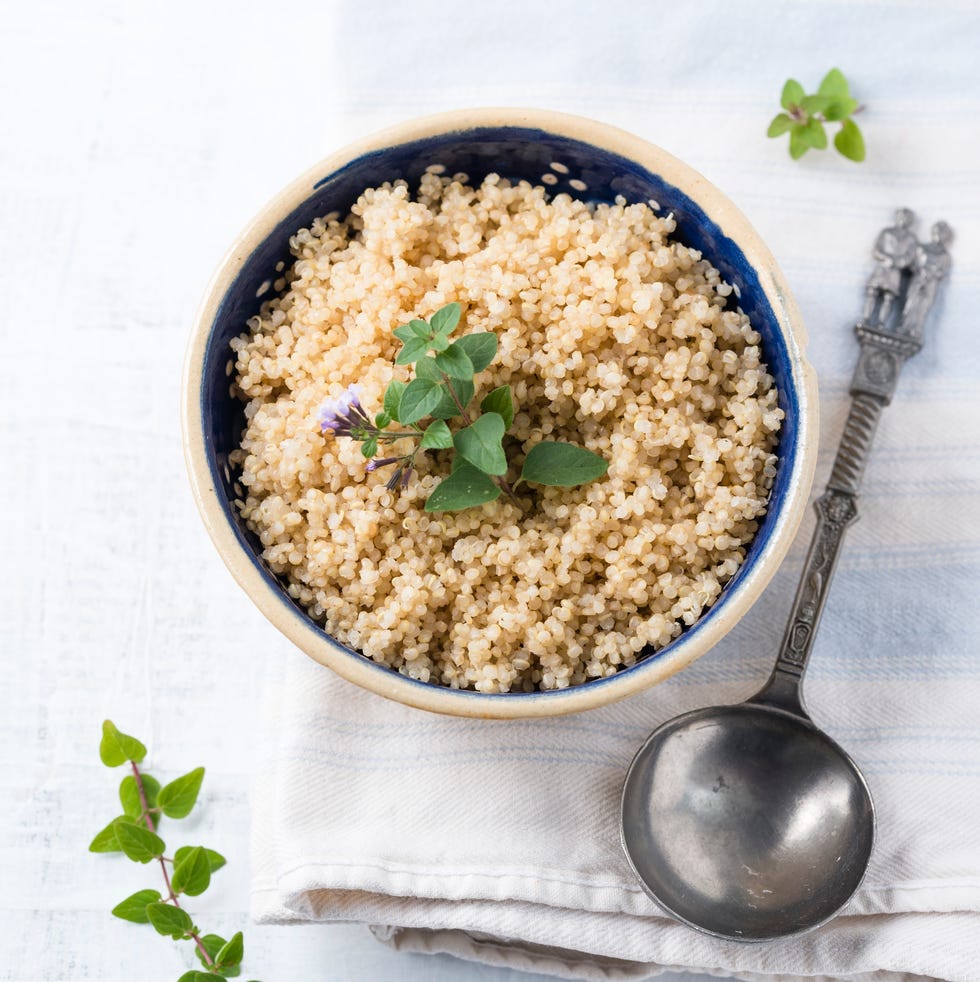
Quinoa
There is a reason quinoa is a super grain: A half-cup contains almost 15 percent of the magnesium you need in a day. Plus, it’s rich in plant-based protein and fiber to relieve constipation, stabilize blood sugar levels, and ward off hunger.
Try it: Add quinoa to your salads, turn it into a cold "cereal" for breakfast, baked it into these Berry-Quinoa Muffins, or use it as a base for veggie burgers.
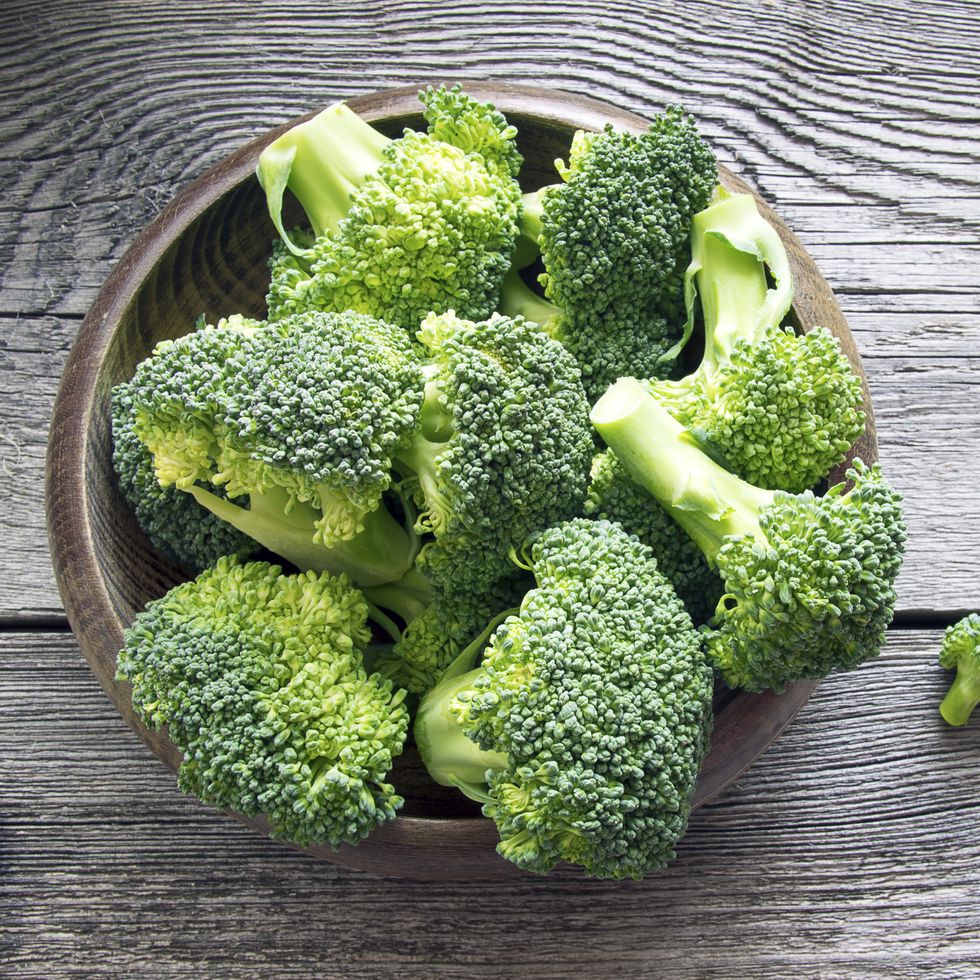
Broccoli
Cruciferous vegetables, like broccoli, are high in all of the four magic compounds that help lower blood pressure—calcium, potassium, magnesium, and vitamin C. Studies have shown that diets high in cruciferous vegetables have led to lower levels of heart disease and longevity.
Try it: Top your favorite flatbread like this Broccoli and Red Onion Flatbread or make a super simple Pan-Fried Chicken with Lemony Roasted Broccoli. Then, be sure to use the stalks in this Charred-Broccoli Relish.

Peaches and nectarines
Peaches and nectarines are like fruit cousins that share a lot of similar benefits, one of which is their high potassium content. A large peach or nectarine provides about 10 percent of a person’s daily recommended value. The potassium helps balance water levels in the body and helps us get rid of excess sodium.
Try it: Eat these sweet fruits as a snack like this Nectarine Bruschetta, blend them into smoothies, add them to salads, or grill them to caramelize their sweetness, like these Peaches with Honey and Pistachios.
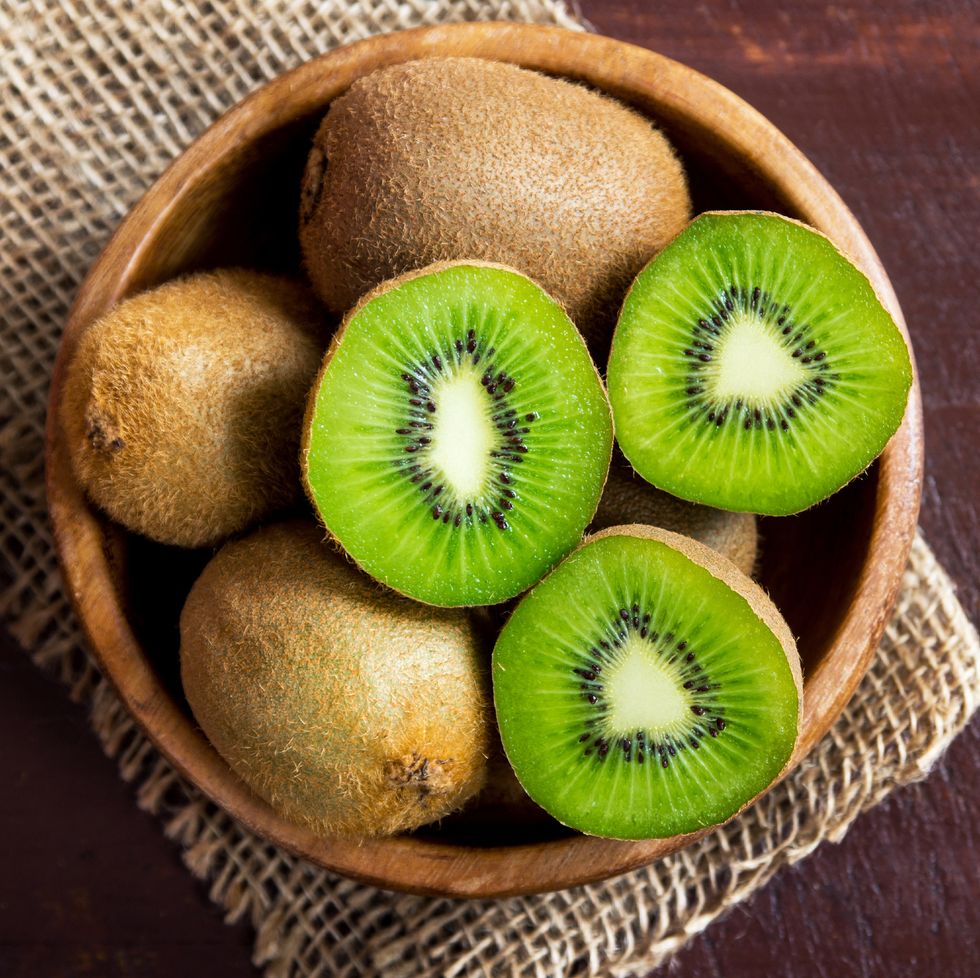
Kiwi
Three kiwifruits a day have been shown to significantly lower blood pressure, according to a study by Oslo University Hospital. Of course, there is no magic fruit or vegetable that will rid you of your blood pressure problems, but adding more kiwi into your diet may be a good choice.
Try it: Chop some kiwi up and sprinkle them over a yogurt parfait.

Red bell peppers
Red bell peppers help reduce high blood pressure with the help of potassium and vitamin A. They're also high in fiber and vitamin C, making them a healthy snack with hummus.
Try it: If your peppers going bad in the fridge, blend them into a Roasted Red Pepper Dip, broil them with some olive oil, or add them to scrambled eggs or a stir-fry.
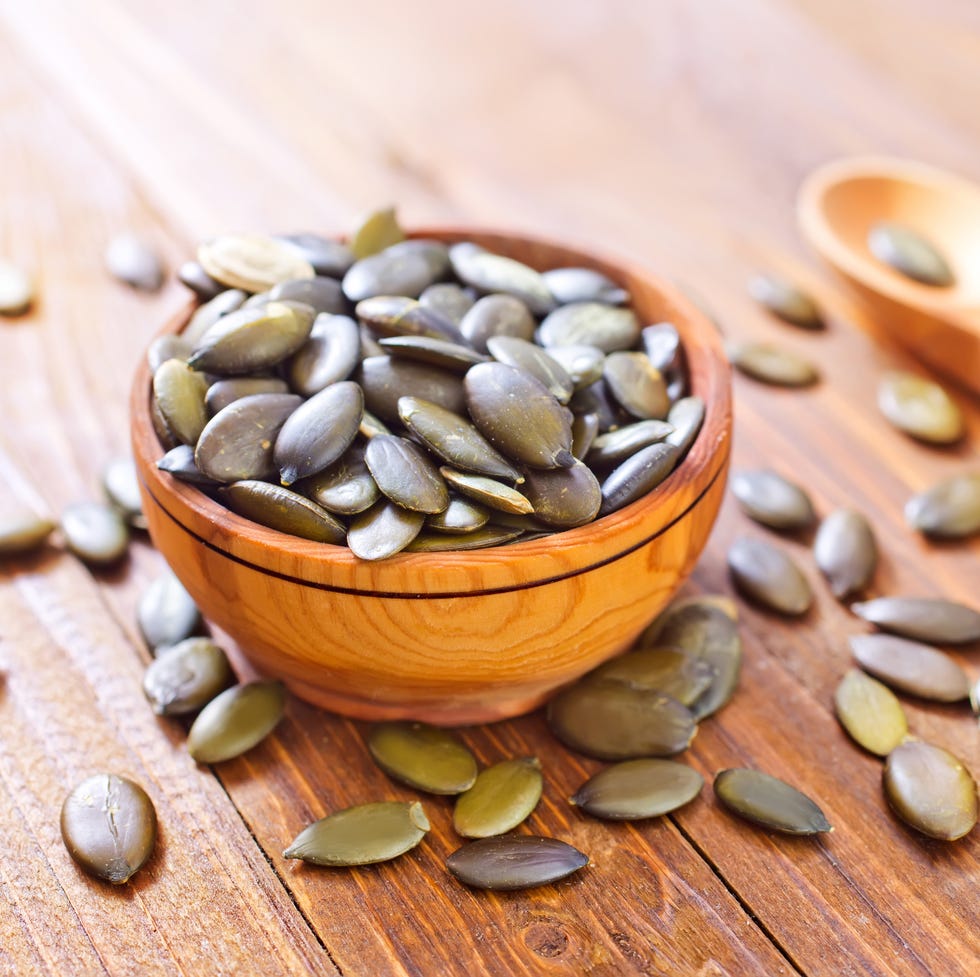
Unsalted pumpkin seeds
Pumpkin seeds are rich in blood pressure-lowering magnesium and zinc. Pumpkin seed oil is also a good way to get the seeds’ benefits. Be warned: Store-bought pumpkin seeds are usually coated in salt, so choose the unsalted varieties or roast your own by baking them in a sheet pan for 20 minutes at 350 degrees.
Try it: This Sauteed Butternut Squash, Kale, and Pumpkin Seed Penne is a delicious, quick dinner.
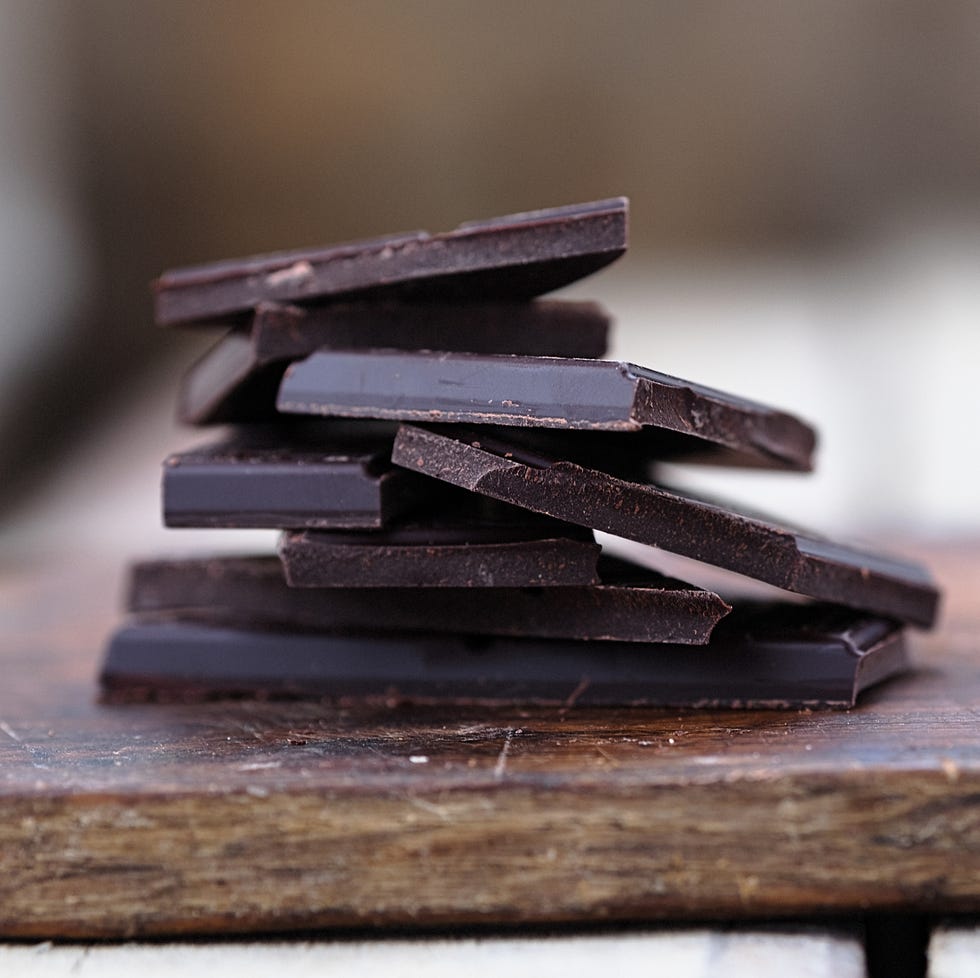
Dark chocolate
Good news for all chocolate lovers: According to a May 2017 study in Heart, flavonol-rich dark chocolate has been linked to a lowered risk of cardiovascular disease. The study found that the flavonols in dark chocolate helped promote healthy blood vessel function.
Try it: Just enjoy it! Remember to stick to a 1-ounce serving, as it can be calorie-dense if you go overboard.
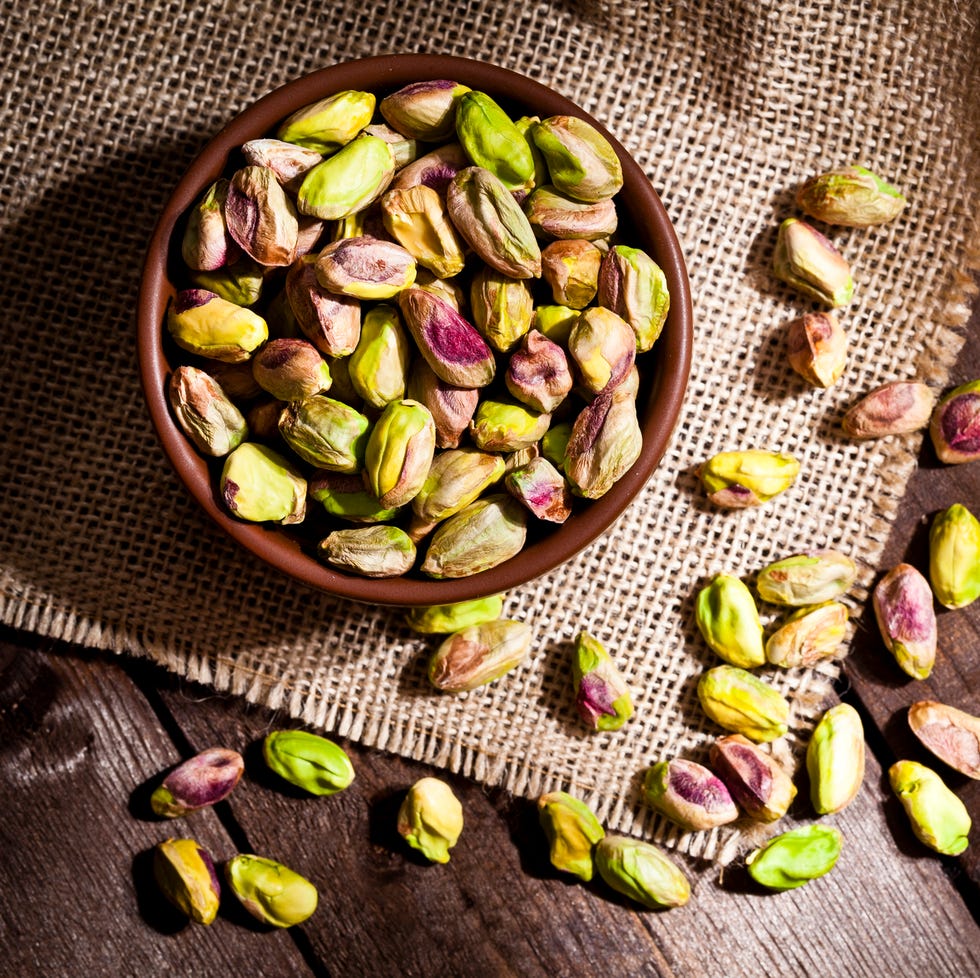
Pistachios
Pistachios have been proven to lower blood pressure by reducing blood vessel tightening and heart rate.
Try it: Add pistachios to a salad or breakfast cereal, blend it into a delicious Rigatoni with Pistachio Pesto, or bake it onto Pistachio-Crusted Fish and Spinach Quinoa. Just be sure to buy unsalted when shopping at the supermarket.
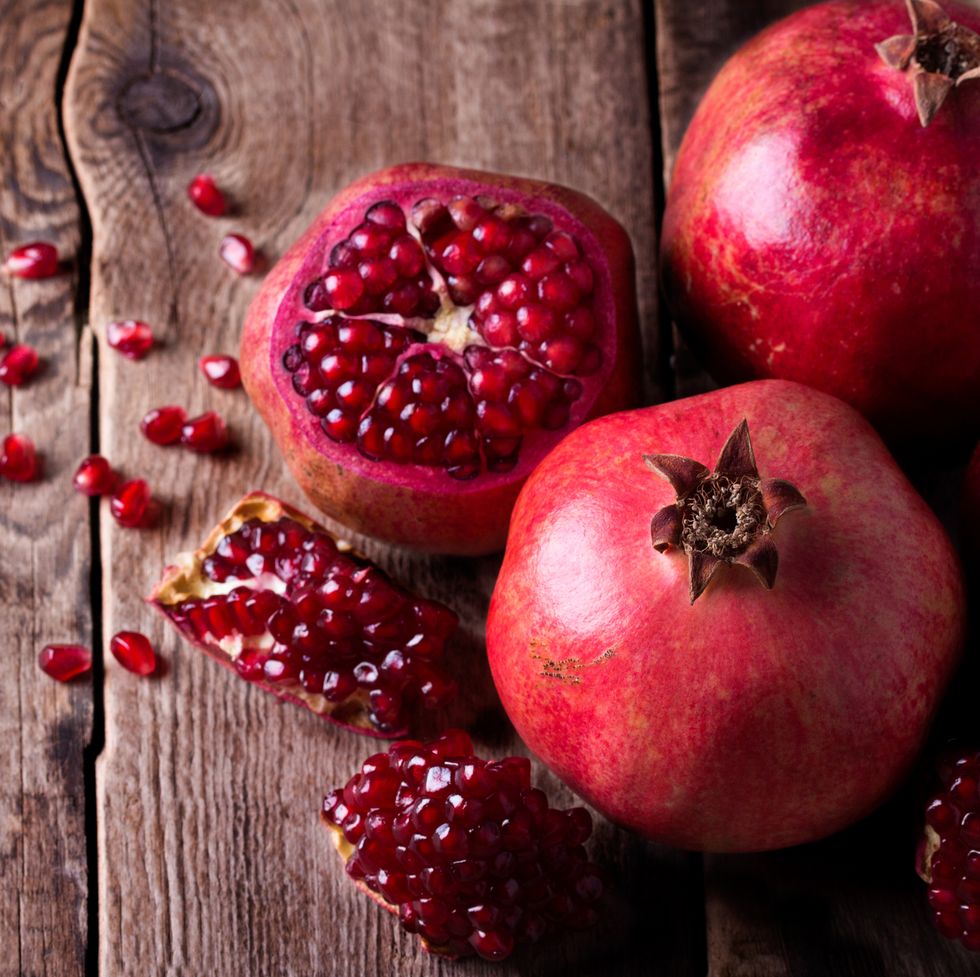
Pomegranates
It’s not always easy to eat a pomegranate, especially since they’re so hard to peel, but pomegranate juice is easy to drink and will give you the same benefits. A September 2012 study in Plant Foods for Human Nutrition suggests that the high antioxidant levels in pomegranate juice can help lower blood pressure.
Try it: Add the juicy seeds to your favorite dishes, like this Cinnamon-Spiked Rice. When you're buying pomegranate juice, just make sure it has no sugar added. We like POM Wonderful 100% Pomegranate Juice.
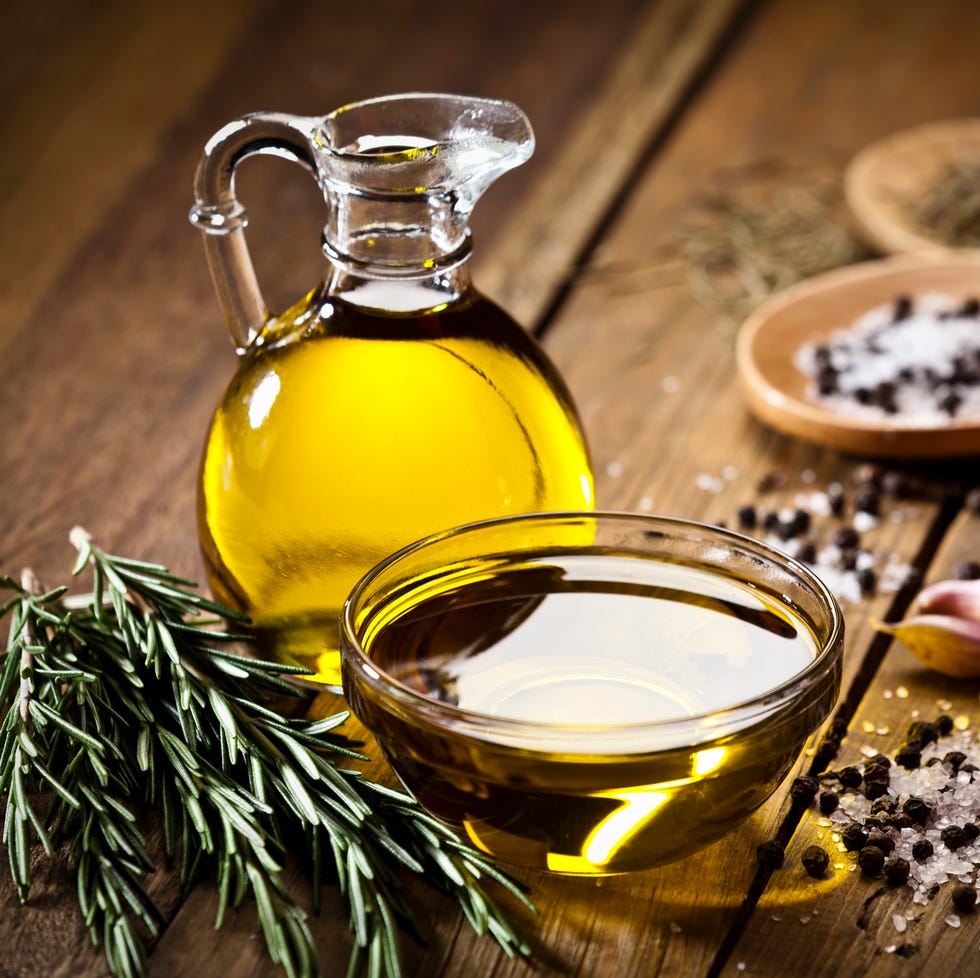
Olive oil
Olive oil may be high in calories, but it has many health benefits. Using polyphenol-rich olive oil has been linked to lowering blood pressure—especially among women. Make olive oil your go-to oil when cooking and new research says replacing butter with olive oil may reduce your risk of disease and death. “The recommendation is to stay away from fats that solidify at room temperature,” Bland says. “When they get incorporated into your diet, they can increase the risk for high blood pressure.”
Try it: Use olive oil in these super-simple salad dressings you can make at home.
CR :: www.prevention.com

ไม่มีความคิดเห็น:
แสดงความคิดเห็น